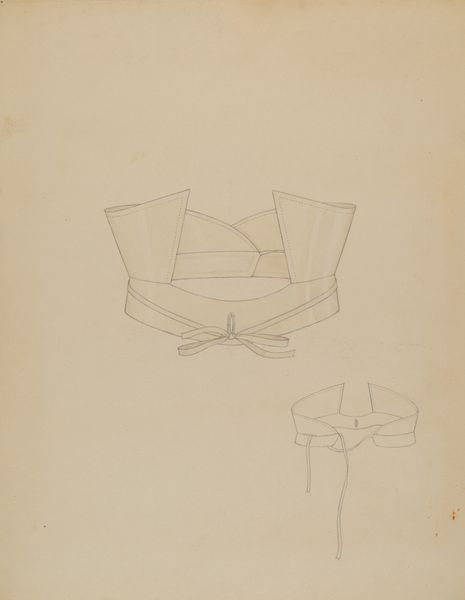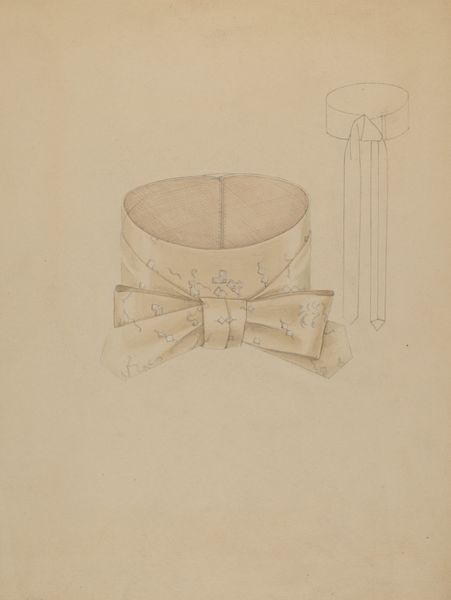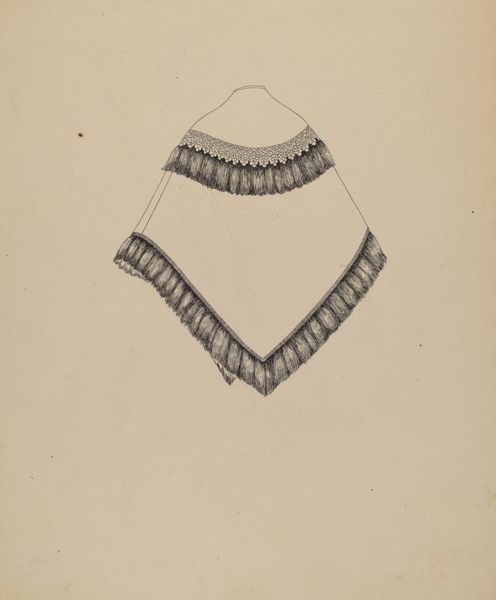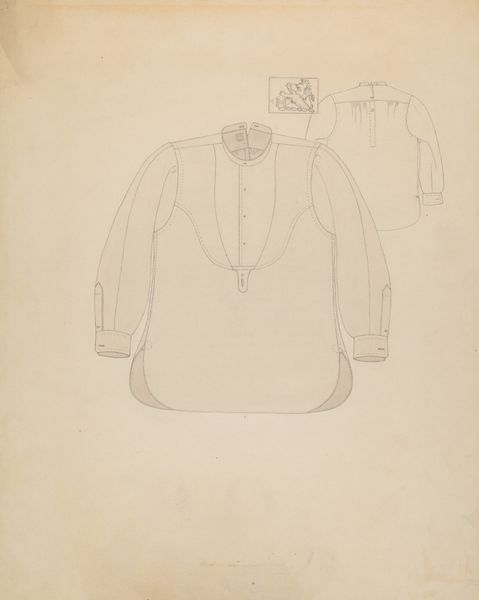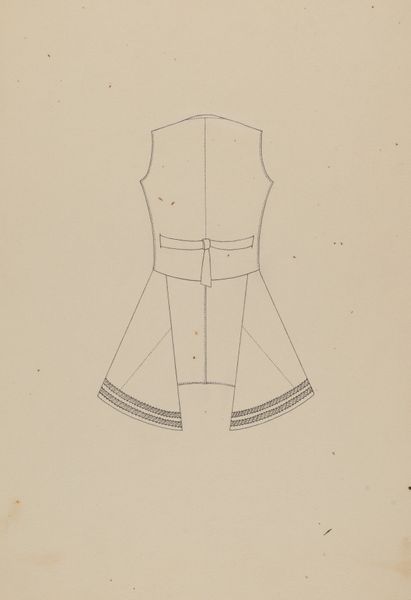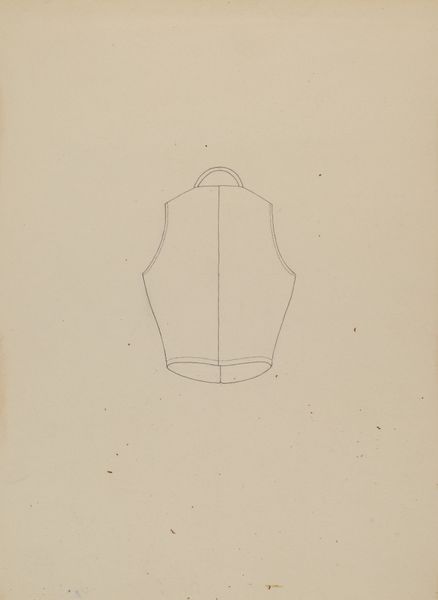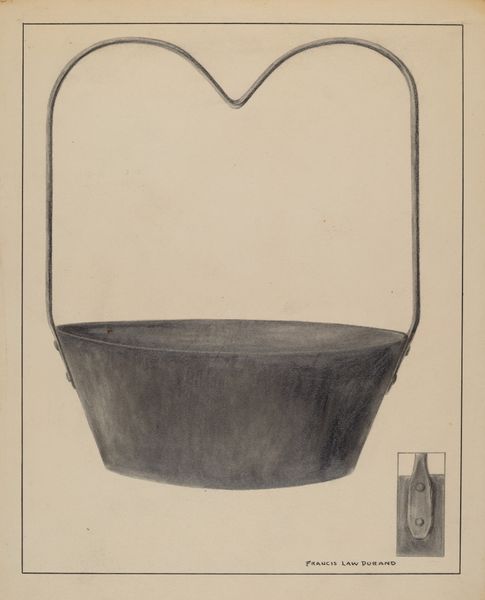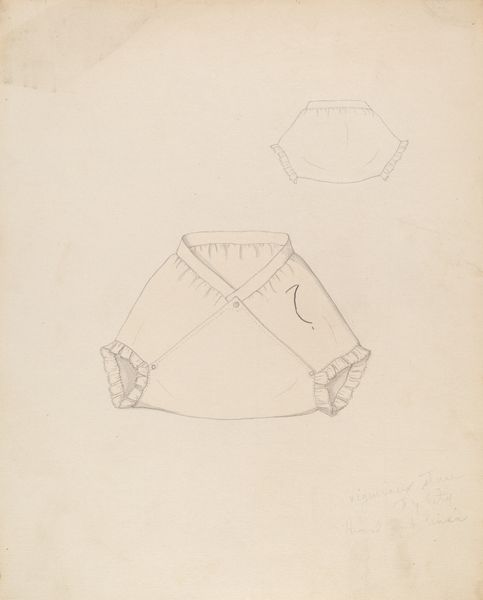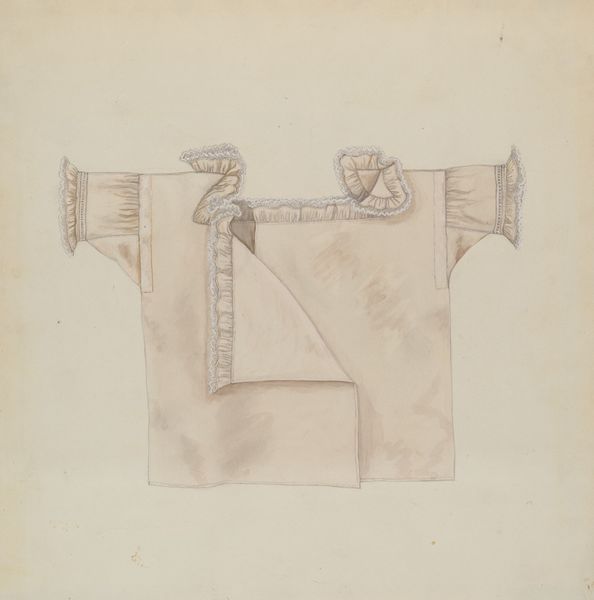
drawing, paper, pencil
#
drawing
#
paper
#
pencil drawing
#
pencil
Dimensions: overall: 29.4 x 22.5 cm (11 9/16 x 8 7/8 in.)
Copyright: National Gallery of Art: CC0 1.0
Editor: Here we have Henry De Wolfe's drawing, "Collar," circa 1936. It's a pencil drawing on paper, and I find the precision and delicate lines quite striking. What kind of context informs your understanding of this image? Curator: Looking at the drawing of a detachable collar like this, it’s impossible not to consider its place in the history of sartorial codes and social hierarchies. In the 1930s, even during economic hardship, appearances were carefully managed, and a clean, starched collar suggested respectability, aspiration. Are these presented as objects of function or style? Editor: Function, I think. Style, in the way someone chooses a practical object. Curator: Precisely. The detachment is interesting as well, making me think about accessibility and the changing expectations of labor. These detachable collars, for a time, allowed for the upkeep of appearance and dignity amidst broader socioeconomic shifts. Could the artist have been aware of this role that his art played in a specific environment? Editor: I didn't consider that! It also makes me wonder who would own or use this sort of drawing of an object like a collar? It doesn't quite seem like finished product design. Was it commissioned or made by someone for reference? Curator: These drawings could have multiple uses. One might argue the museum becomes an institution which dictates this art's modern understanding and accessibility. Editor: That is such an important point. So how this object eventually became a displayed artwork reveals so much. Curator: Exactly. I now have a different understanding of drawings because of your questioning! It has multiple meanings when displayed in an exhibit. Editor: Agreed! Seeing art as an historical record is helpful. Thanks for sharing your knowledge!
Comments
No comments
Be the first to comment and join the conversation on the ultimate creative platform.
